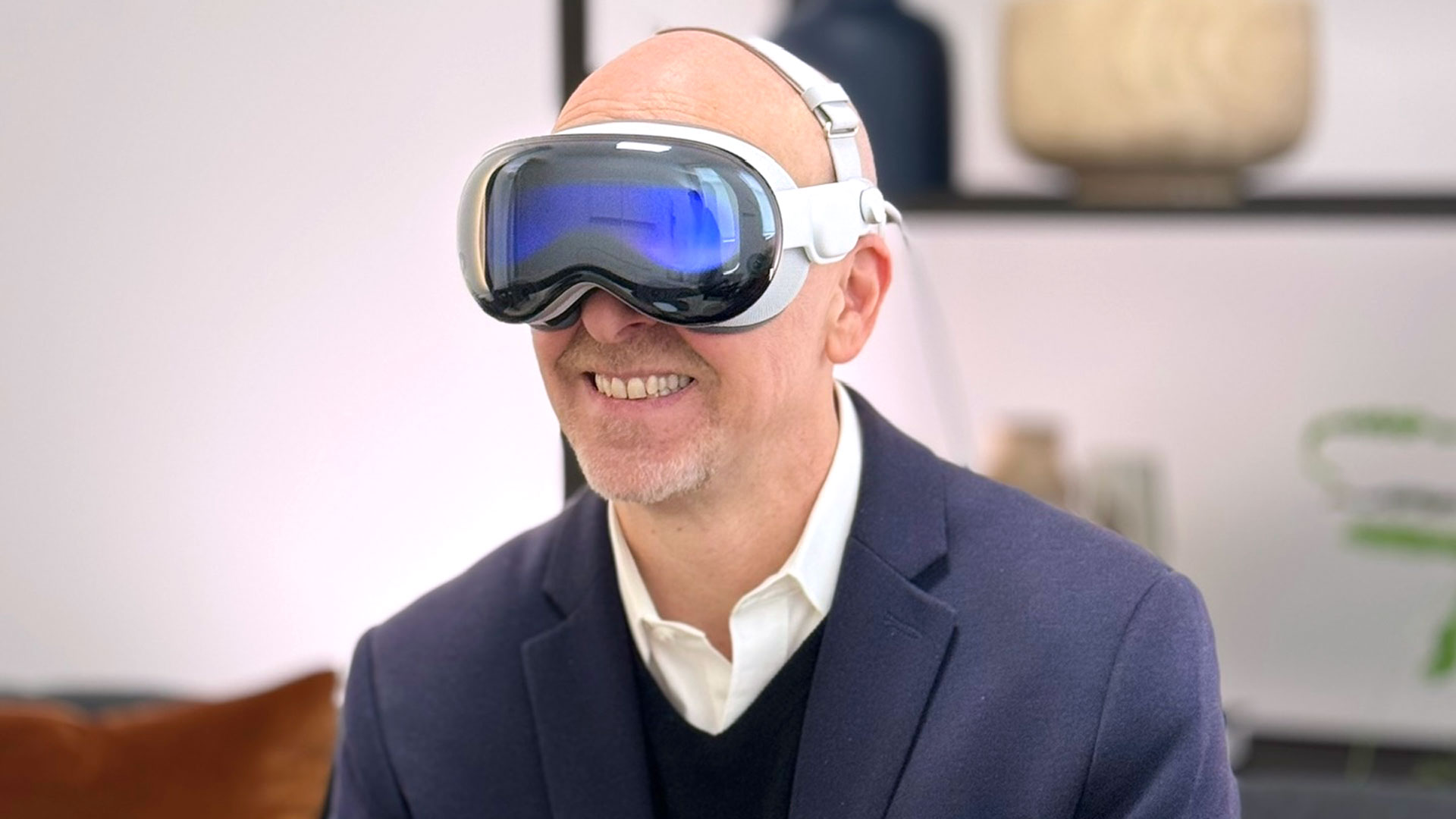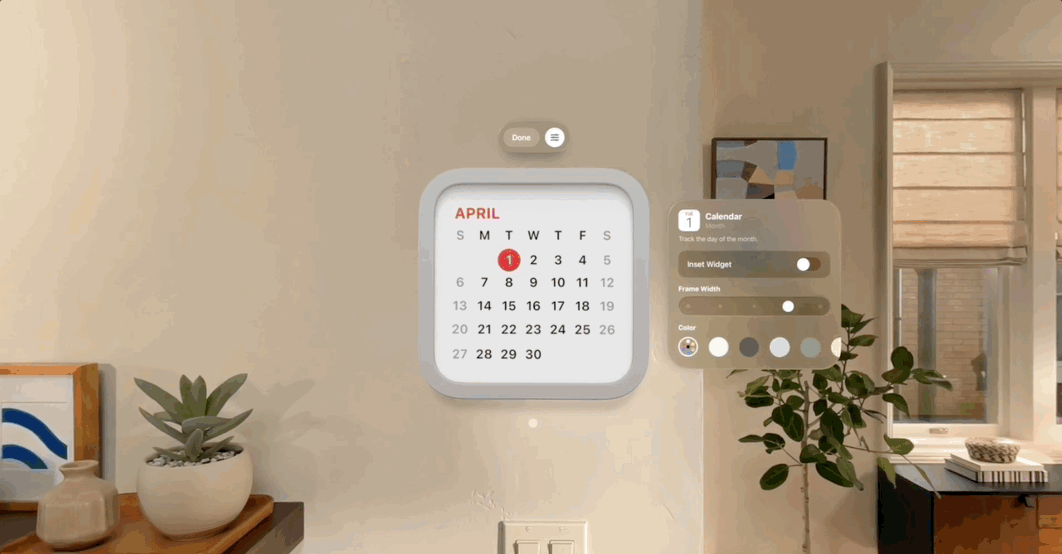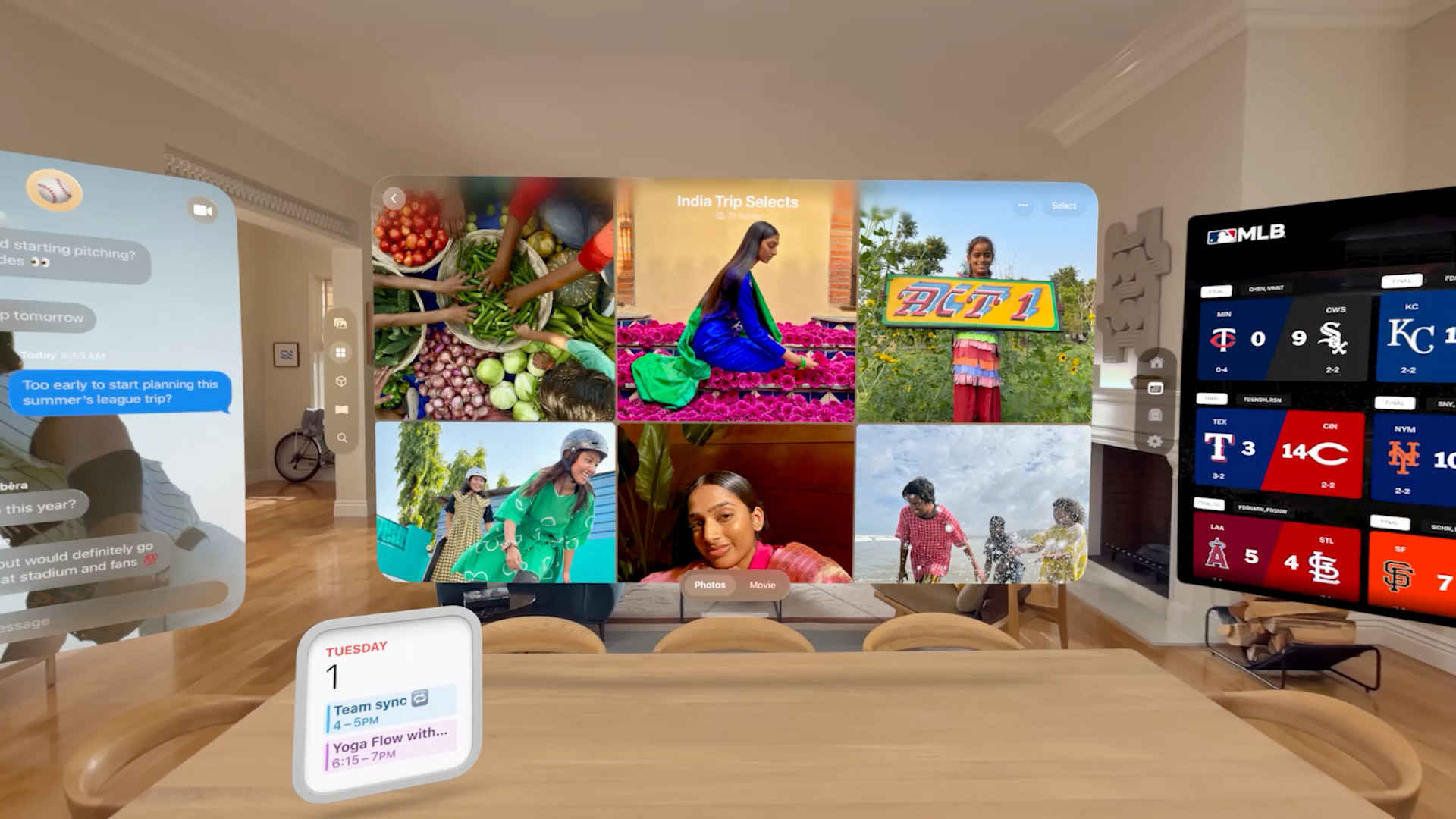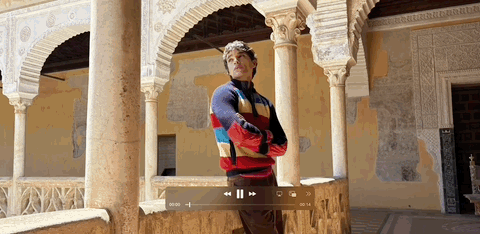Apple Vision Pro is unquestionably one of the most powerful pieces of consumer hardware Apple has ever built, but the pricey gadget is still struggling to connect with consumers. And that's a shame because the generational-leaping visionOS 26 adds even more eye-popping features to the $3,500 headset, which I think you'd struggle to find with any other mixed reality gear.
Apple unveiled the latest Vision Pro platform this week as part of its wide-ranging WWDC 2025 keynote, which also introduced a year-OS naming system. For some platforms like iOS, the leap from, say, 18 to 26 wasn't huge, but for the toddler visionOS 2, it was instantly thrust into adulthood and rechristened visionOS 26.
This is not a reimaging of visionOS, and that's probably because its glassiness has been amply spread across all other Apple platforms in the form of Liquid Glass. It is, though, a deepening of its core attributes, especially around spatial computing and imagery.
I had a chance to get an early hands-on experience with the platform, which is notable because Vision Pro owners will not be seeing a visionOS 26 Public beta. Which means that while iPhone, iPad, Apple Watch, and Apple TV owners are test-driving OS 26 platform updates on their favorite hardware, Vision Pro owners will have a longer wait, perhaps not seeing these enhancements until the fall. In the interim, developers will, of course, have access for testing.
Since much of the Vision Pro visionOS 26 interface has not changed from the current public OS, I'll focus on the most interesting and impactful updates.
See "me"

During the keynote, Apple showed off how visionOS 26 Personas radically moves the state of the art forward by visually comparing a current Persona with a new one. A Vision Pro Persona is a virtual, live, 3D rendering of your head that tracks your movements, facial expressions, and voice. It can be used for communicating with other people wearing the headgear, and it's useful for calls and group activities.
Apple has been gradually improving Personas, but visionOS 26 is a noticeable leap, and in more ways than one.
You still capture your Persona using the front-facing 3D camera system. I removed my eyeglasses and held the headset in front of my face. The system still guides you, but now the process seems more precise. I followed the audio guidance and looked slowly up, down, left, and right. I smiled and raised my eyebrows. I could see a version of my face faintly on the Vision Pro front display. It's still a bit creepy.

I then put the headset back on and waited less than a minute for it to generate my new Persona. What I saw both distressed and blew me away.
I was distressed because I hate how I look without my glasses. I was blown away because it looked almost exactly like me, almost entirely removing the disturbing "uncanny valley" look of the previous iterations. If you ever wonder what it would be like to talk to yourself (aside from staring at a mirror and having a twin), this is it.
There was a bit of stiffness and, yes, it fixed my teeth even though part of my setup process included a big smile.
It was easy enough to fix the glasses. The Personas interface lets you choose glasses, and now the selection is far wider and with more shades. I quickly found something that looked almost just like mine.
With that, I had my digital doppelganger that tracked my expressions and voice. I turned my head from side to side and was impressed to see just how far the illusion went.
Facing the wall

One of the most intriguing moments of the WWDC Keynote was when they demonstrated visionOS 26's new widget capabilities.
Widgets are a familiar feature on iPhones, iPads, and Macs, and, to an extent, they work similarly on Vision Pro, but the spatial environment takes or at least puts them in new and unexpected places.
In my visionOS 26 demo experience, I turned toward a blank wall and then used the new widget setup to pin a clock widget to the wall. It looked like an actual clock hanging on the wall, and with a flip of one setting, I made it look like it was inset into the wall. It looked real.
On another wall, I found a music widget with Lady Gaga on it. As I stepped closer, a play button appeared in the virtual poster. Naturally, I played a little Abracadabra.
Another wall had multiple widgets, including one that looked like a window to Mount Fiji; it was actually an immersive photo. I instinctively moved forward to "look out" the window. As the vista spread out before me, the Vision Pro warned me I was getting too close to an object (the wall).
I like Widgets, but temper the excitement with the realization that it's unlikely I will be walking from room to room while wearing Vision Pro. On the other hand, it would be nice to virtually redecorate my home office.

The key to Vision Pro's utility is making its spatial capabilities useful across all aspects of information and interaction.
visionOS 26 does that for the Web with spatial browsing, which basically can turn any page into a floating wall of text and spatially-enhanced photos called Spatial Scenes.

visionOS 26 handles the last bit on the fly, and it's tied to what the platform can do for any 2D photo. It uses AI to create computational depth out of information it can glean from your flat image. It'll work with virtually any photo from any source, with the only limitation being the source image's original resolution. If the resolution is too low, it won't work.
I marveled at how, when staring at one of these converted photos, you could see detail behind a subject or, say, an outcropping of rock that was not captured in the original image but is inexplicably there.
It's such a cool effect, and I'm sure Vision Pro owners will want to show friends how they can turn almost all their photos into stereoscopic images.
Space time
I love Vision Pro's excellent mixed reality capabilities, but there's nothing quite like the fully immersive experience. One of the best examples of that is the environments that you enable by rotating the crown until the real world is replaced by a 360-degree environment.
visionOS 26 adds what may be the best environment yet: a view of Jupiter from one of its moons, Amalthea. It's beautiful, but the best part of the new environment is the control that lets you scroll back and forth through time to watch sunrises and sunsets, the planet's rotation, and Jupiter's dramatic storms.
This is a place I'd like to hang out.
Of course, this is still a developer's beta and subject to significant change before the final version arrives later this year. It's also another great showcase for a powerful mixed reality headset that many consumers have yet to try. Perhaps visionOS 26 will be the game changer.











 English (US) ·
English (US) ·